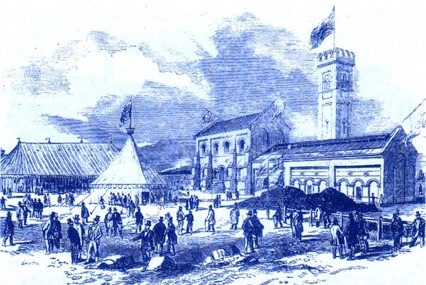If you are wondering why a small area in Surbiton, London, is called Seething Wells, you might be interested in knowing that it has a long history dating back to the 19th century when it was a site for waterworks that supplied London with water from the River Thames. Nowadays, Seething Wells is primarily a residential area, but it still has a few remnants of its waterworks past, including decommissioned filter beds in the northwest part of the area that borders the Thames [1].
Here is a detailed account of the history and etymology of Seething Wells:
The Origins of Seething Wells
19th Century Waterworks
Seething Wells is the site of 19th-century waterworks that provided London with clean water from the River Thames. The water was pumped from the Thames and filtered using sand beds to remove impurities. Seething Wells was one of several waterworks that supplied water to London, and it played a significant role in preventing the spread of cholera, a deadly disease that killed thousands of people in the city during the 19th century [2].
The Filter Beds
The Seething Wells Filter Beds were decommissioned in the mid-20th century, but they remain a notable feature of the area. The filter beds were used to purify water, and they are the largest standing open water area in Surbiton, covering 13 hectares [3].
The Etymology of Seething Wells
The name “Seething” comes from the Middle English word “sēthe,” which means to boil or bubble. The name is believed to refer to the bubbling of the water as it was filtered through the sand beds. The name “Seething Wells” was first recorded in 1719 by antiquary John Aubrey, who noted that “It bubbles up and is called Seething-Well” [4].
Current Status of Seething Wells
Today, Seething Wells is mainly a residential area, and it is home to Kingston University’s Seething Wells Halls of Residence, which provides accommodation for students. However, the area still has some remnants of its waterworks past, including the decommissioned filter beds. The filter beds have also become a designated site for nature conservation, and they are home to various bird species, including the common tern, which is a protected species in the UK [10].
Conclusion
Seething Wells is a small area in Surbiton with a long history dating back to the 19th century when it was a site for waterworks that supplied London with clean water from the River Thames. Although Seething Wells is now primarily a residential area, it still has some remnants of its waterworks past, including decommissioned filter beds that have become a designated site for nature conservation. The name “Seething” comes from the Middle English word “sēthe,” which means to boil or bubble, and it is believed to refer to the bubbling of the water as it was filtered through the sand beds. The area played a significant role in preventing the spread of cholera in London during the 19th century by supplying clean water to the city.
